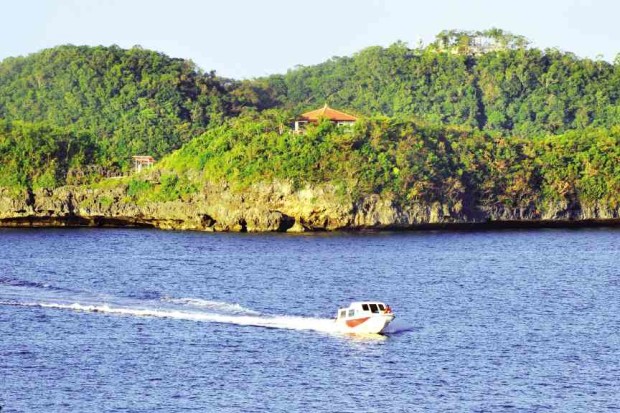
388 steps carved at the side of a hill that leads to a view deck 546 meter-long zipline that connects Governor’s Island and Virgin Island islands
Numbers become interesting and exciting at the Hundred Islands National Park (HINP) in Alaminos City in Pangasinan province, one of the top tourist drawers in mainland Luzon. The country’s very first national park has 123 islands and islets. Make that 124 when it is low tide. Of these, six had been developed for tourists and locals to enjoy the sea, the sand and the sun.
One of the most developed is the Governor’s Island, which has the highest peak at 250 feet above sea level.
To reach the hilltop, a winding stairway is carved at the side of the hill. It has a total of sweat-producing 388 steps that lead to a view deck which offers a 360-degree, picture-perfect, awe-inspiring panorama of the national park.
Just being at the view deck gives one the invigorating sense of being on top of the world and the excitement to conquer the islands and the sea. But if one wants an adrenaline rush, there’s the zipline that offers a “flight” over the sea.
At the corner of the view deck is the launching pad of the zipline that connects Governor’s Island and Virgin Island. The 546-meter long zipline is located at 230 feet above sea level. After a heart-thumping, scream-generating 30-45 second flight, the rider touches down on Virgin.
Then its about 5-minute walk back to Governor’s through the 120-meter-long orange pontoon bridge which delightfully contrasts with the green islands and the blue water. For those who want to experience the excitement of “flying” but would rather take a shorter route can opt for the zipline on Quezon Island. It is only 120 meters long.
Park activities
The HINP also offers other activities, such as kayaking, helmet diving, jet skiing, parasailing, banana boat riding, diving, cliff diving and wall climbing.
The trip to the islands usually starts in the early morning. Visitors go to the Tourism Welcome Center at Lucap Wharf, the jump-off point to the islands. It is here where boat rides are arranged and where visitors can find information on island tours and activities, and fees.
The tour includes a 20-minute stay on each island. The rest of the day is spent on the island of the visitors’ choice. The boatman fetches them at the appointed time, but at most is at 4:40 p.m. of the same day.
Daytime visitors may rent gazebos on six islands: Quezon (13), Clave and Lopez (seven each), Governor and Romulo (two each) and Mayor (one).
But if they want to see more, there’s the “service tour” which offers hopping on the three islands and 10 others—Shell, Romulo, Sison, Marcos, Clave, Quirino, Scout, Macapagal (formerly Coral), Cuenco and Lopez.
The tour includes passing by Cathedral, Milagrosa, Braganza, Bat and Monkey Islands. There’s no way landing on these islands, which have no beach areas, but one can just marvel at their diverse beauty.
Bat Island, for instance, has 3,000 fruit bats (according to the environment department), hanging on tree branches and sleeping like babies. They do not mind visitors ogling and taking photos of them.
But it’s only from September to November that the bats stay on the islands. In other months, they are away, perhaps looking for food, according to city tourism officer Sol Tablang.
Children’s Island is so-called because of the shallow, placid water where children can safely frolic. The most visited because of its wide beach area is Quezon, where there are two pavilions, gazebos and picnic tables under the trees.
Night tours
Night tours are offered, too, at the HINP. There are nine rest houses in the six developed islands where visitors can stay for the night. Those who prefer sleeping under the stars and fanned by the sea breeze may stay on the beach of the island of their choice. Tents for rent are available, along with pillows, cooking and dining wares, flashlights and whatever is needed for the night stay. The boatman comes to fetch them the next day.
Whatever the visitors fancy, the Alaminos City government, which operates and manages the HINP, has a staff to extend assistance.
In 2015, the park drew more than 368,000 visitors. But it looks like the number would be doubled this year as 330,000 had already visited as of July.